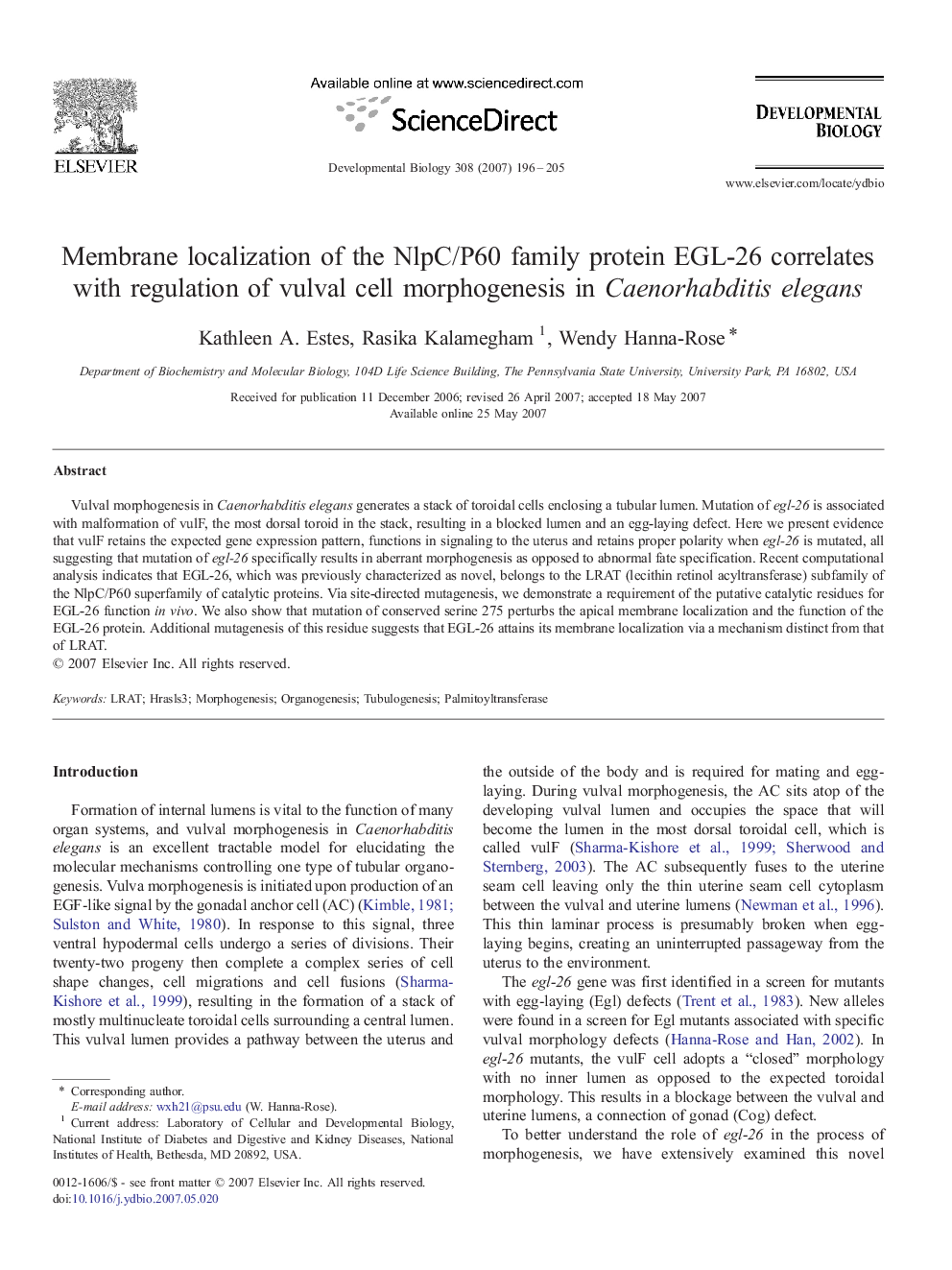| Article ID | Journal | Published Year | Pages | File Type |
|---|---|---|---|---|
| 2175090 | Developmental Biology | 2007 | 10 Pages |
Vulval morphogenesis in Caenorhabditis elegans generates a stack of toroidal cells enclosing a tubular lumen. Mutation of egl-26 is associated with malformation of vulF, the most dorsal toroid in the stack, resulting in a blocked lumen and an egg-laying defect. Here we present evidence that vulF retains the expected gene expression pattern, functions in signaling to the uterus and retains proper polarity when egl-26 is mutated, all suggesting that mutation of egl-26 specifically results in aberrant morphogenesis as opposed to abnormal fate specification. Recent computational analysis indicates that EGL-26, which was previously characterized as novel, belongs to the LRAT (lecithin retinol acyltransferase) subfamily of the NlpC/P60 superfamily of catalytic proteins. Via site-directed mutagenesis, we demonstrate a requirement of the putative catalytic residues for EGL-26 function in vivo. We also show that mutation of conserved serine 275 perturbs the apical membrane localization and the function of the EGL-26 protein. Additional mutagenesis of this residue suggests that EGL-26 attains its membrane localization via a mechanism distinct from that of LRAT.
